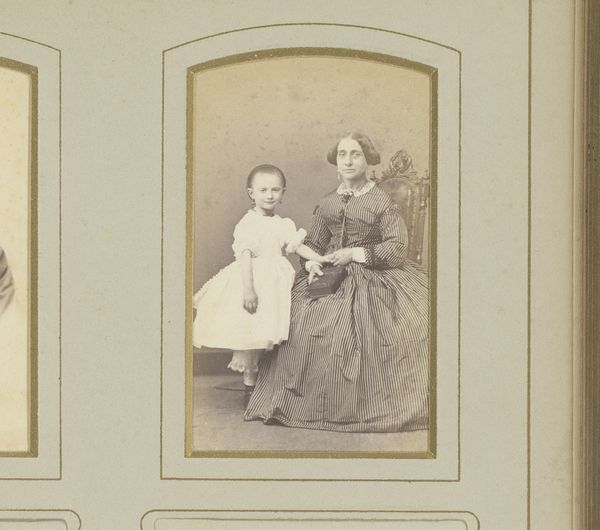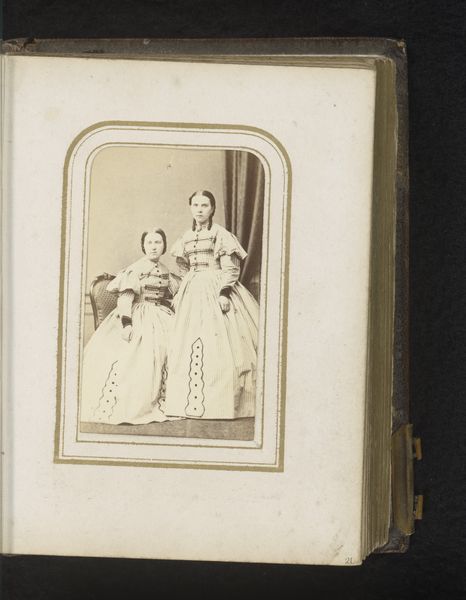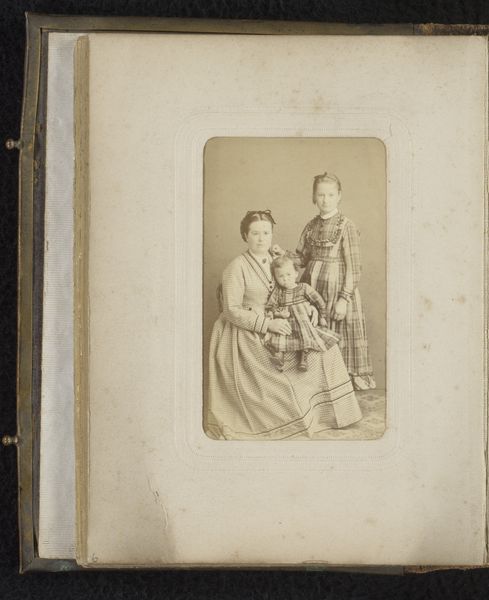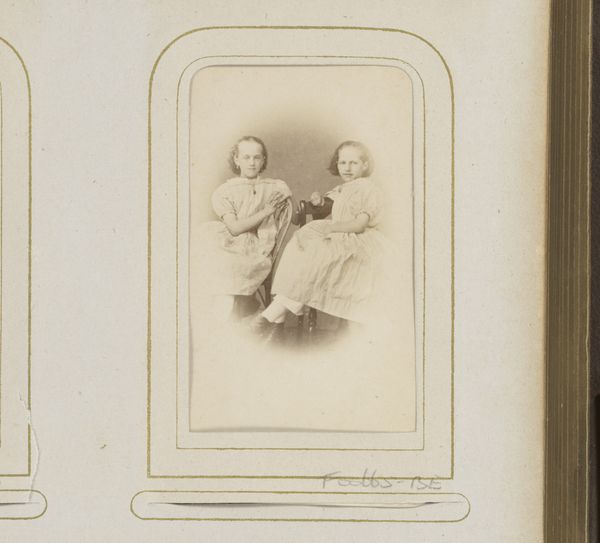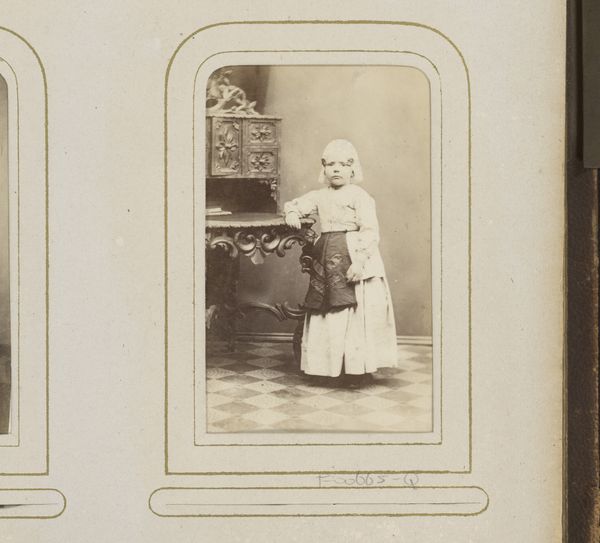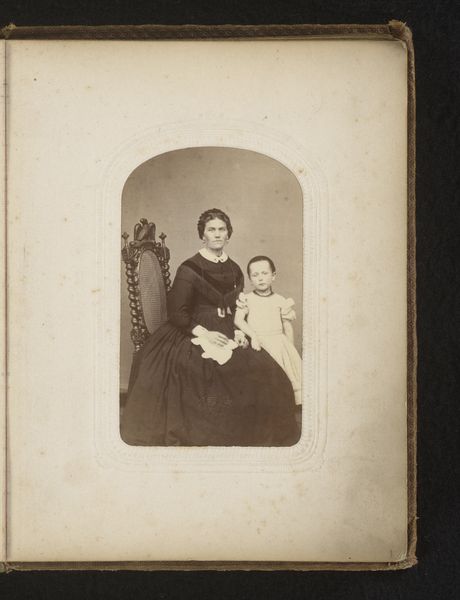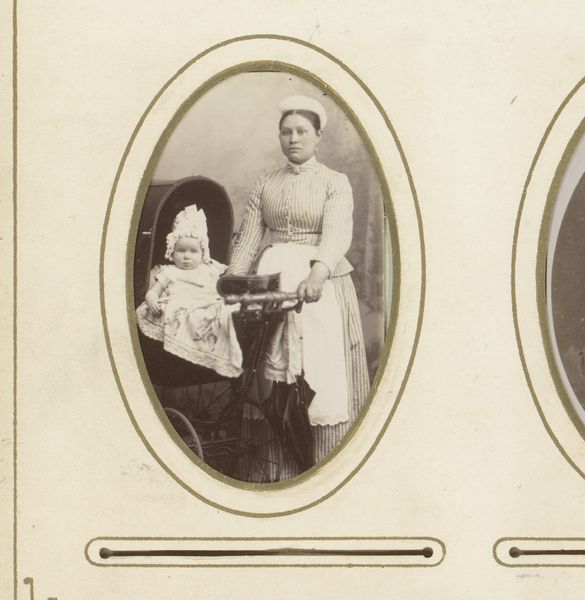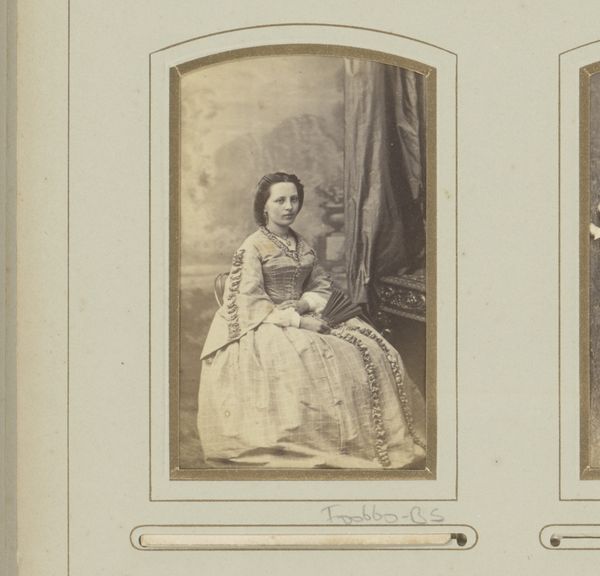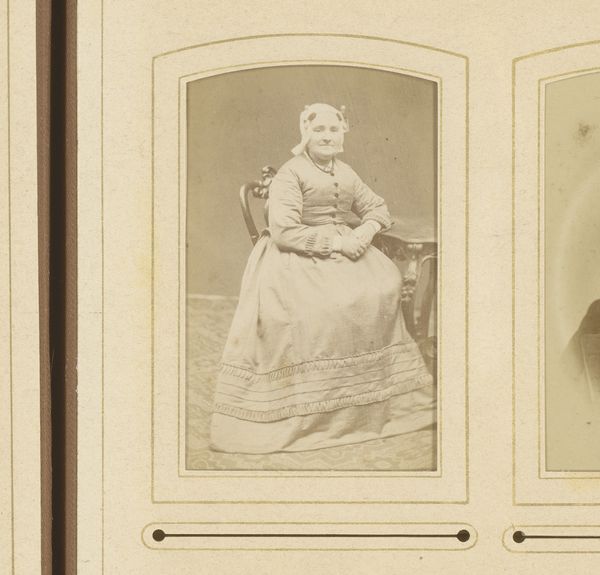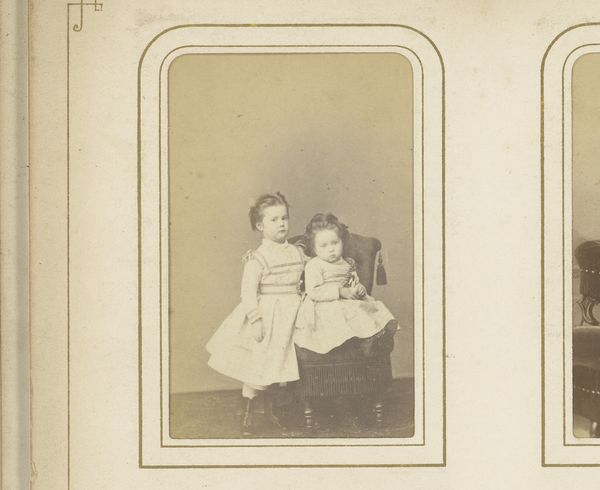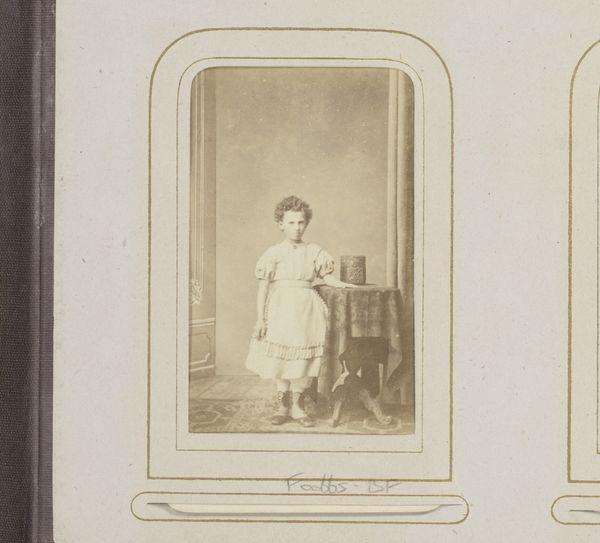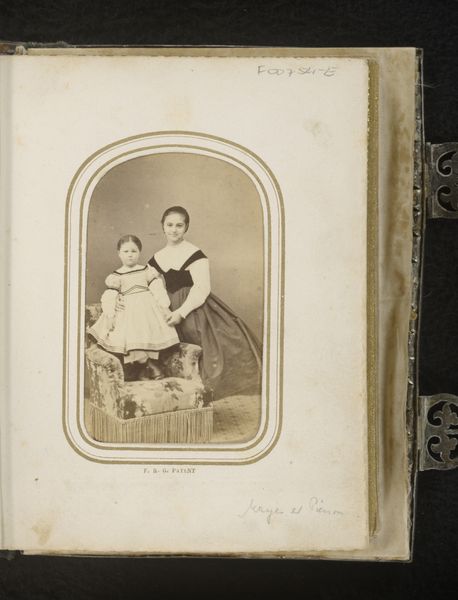
photography
#
portrait
#
mother
#
photography
#
group-portraits
Dimensions: height 82 mm, width 50 mm
Copyright: Rijks Museum: Open Domain
Editor: Here we have "Portret van een moeder met kind," or "Portrait of a Mother with Child," a photograph dating from around 1855 to 1880, by Gerarda Henriëtte Matthijssen. It’s very sweet, but also a bit…stiff. What do you see in this piece? Curator: What strikes me is the deliberate staging. Photography in this era wasn’t just about capturing a moment. It was a carefully constructed performance, a representation of social standing and values. Notice their clothes; they speak to middle-class aspirations. Editor: Yes, the mother’s dress looks quite formal, even for a portrait. But isn’t there a contrast between the formal setting and the presumed intimacy of a mother-child portrait? Curator: Precisely! This tension reveals much about the evolving role of motherhood in the 19th century. While expected to nurture, mothers were also symbols of respectability, and this portrait visually balances those roles. Consider how these images, when circulated within the family and community, actively constructed and reinforced those identities. Editor: It's interesting how this one image captures those dual expectations. Are there particular photographic techniques from this era that further emphasize the message? Curator: Absolutely. The limited tonal range and somewhat rigid poses were common due to the constraints of early photography, yet they also unintentionally enhanced the sense of formality and control desired by the subjects. The very act of posing for such a photo was a statement. It was a luxury, demonstrating the family's economic stability, but also about the need for representation. What does that say about their self-image, or their need to demonstrate adherence to societal conventions? Editor: I never considered that. So, what I thought was a simple mother-child portrait reveals complex social dynamics! Curator: Exactly. It reveals the layers of meaning embedded within a seemingly straightforward image, showing the intersection between personal representation and public image. It also reveals a cultural context and photographic representation that shapes that image. Editor: This makes me want to explore the history of portraiture and its impact on social perception. Curator: Excellent! That’s the power of contextual analysis – to open up new avenues of understanding.
Comments
No comments
Be the first to comment and join the conversation on the ultimate creative platform.
